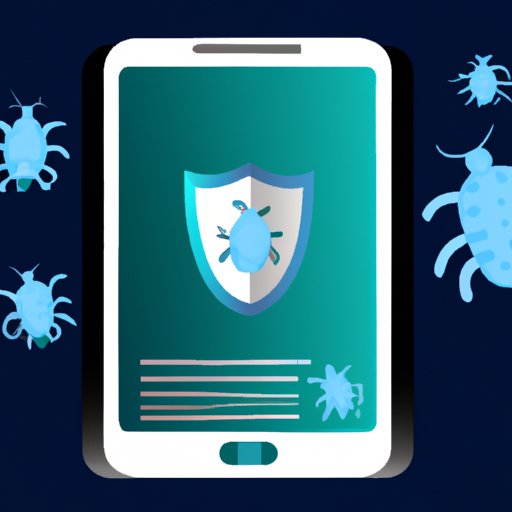Introduction
Mobile phones have become an integral part of our lives. We rely on them for communication, entertainment, and even business purposes. As such, it is important to ensure that our devices remain secure from potential threats like viruses. In this article, we will explore the question of whether or not your phone can get viruses, how to identify and remove them, as well as some tips for protecting your device.
How to Identify Signs of a Virus on Your Phone
The first step in dealing with a virus is knowing how to identify one. There are several common symptoms of a virus, including:
- Unexpected pop-up ads
- Sluggish performance
- Battery draining quickly
- Unauthorized data usage
- Unfamiliar apps appearing
These are just a few examples of warning signs that may indicate your phone has been infected with a virus. It is important to pay attention to any unusual activity on your device and take steps to protect it immediately.

Protecting Your Smartphone from Viruses
Fortunately, there are several measures you can take to protect your device from viruses. The most effective way to protect your smartphone is to use an antivirus app. These apps can detect and block malicious programs and websites that could potentially infect your device. Additionally, many antivirus apps also offer features like firewalls and real-time scanning to further protect your device.
It is also important to keep your phone’s operating system up to date. Operating system updates often include security patches that help protect your device from new threats. Finally, be sure to practice good online habits by avoiding suspicious websites or downloading unknown files or apps.
Common Types of Mobile Phone Viruses
There are several different types of mobile phone viruses. The most common type is malware. Malware is malicious software designed to damage or disrupt your device’s operations. Another common type of virus is a Trojan horse. These viruses disguise themselves as legitimate applications or downloads, but contain malicious code that can steal personal information or cause other problems.
Spyware is another type of virus that can be installed on your phone without your knowledge. Spyware is designed to collect data from your device, such as browsing habits and passwords. This information can then be used to gain access to your accounts or to spread malicious content.

Best Practices for Keeping Your Phone Secure
In addition to installing antivirus software and keeping your operating system up to date, there are several other steps you can take to keep your phone secure. One of the simplest and most effective methods is to use a strong password to protect your device. Additionally, avoid visiting suspicious websites or downloading unknown apps as these can introduce viruses to your device.
It is also a good idea to regularly back up your data. This will ensure that if your device is ever compromised, you will still have access to your important files and documents. Finally, be sure to delete any unused or suspicious apps from your device.

How to Scan and Remove Viruses from Your Phone
If your phone does become infected with a virus, there are several steps you can take to remove it. The first step is to use a reliable antivirus program to perform a full scan of your device. If a virus is detected, the antivirus software should be able to quarantine or remove it. Additionally, you may need to perform a factory reset of your phone in order to completely remove the virus.
Conclusion
Viruses can cause significant damage to your device and compromise your privacy. Fortunately, there are several steps you can take to protect your phone from viruses. Be sure to install antivirus software, keep your operating system up to date, use strong passwords, and avoid suspicious websites and downloads. Additionally, if your phone does become infected, you can use antivirus software to scan and remove the virus. By following these best practices, you can help keep your device safe from harm.


